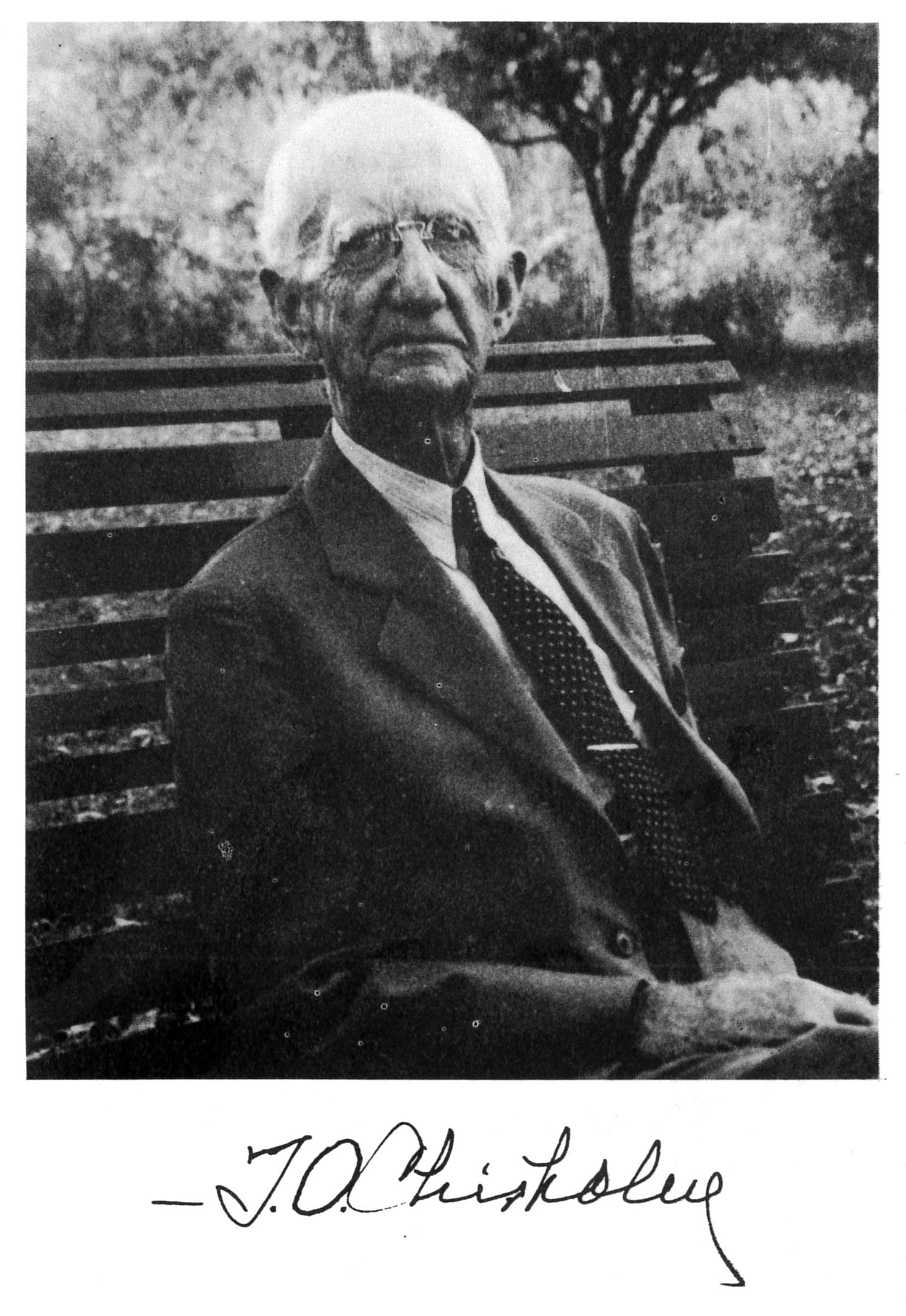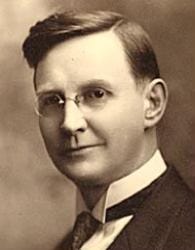Great Is Thy Faithfulness
Episode 1
Good morning and welcome to Wake The Dawn. In this project I will delve into a hymn or Christian song, exploring the history and life of the hymnist and playing the hymn for your enjoyment. My goal is to encourage, put out beautiful music, and provide a little background on the songs the Christian church has been regularly singing for hundreds of years. The diversity of hymnists and psalmists that have written Christian music make it a unique genre. They come from all walks of life and situations – brought together by Christ – writing about struggles, praises, fears, and triumphs. It is fascinating to learn their stories.
Today we’re going back to 1866 to the small town of Franklin, Kentucky where Thomas Obediah Chisholm was born. A year earlier slavery had been abolished in the United States, and the country was recovering from the shocks of the civil war. It was during this time that Thomas Chisholm was born.
He grew up on a farm during his childhood, and at the age of 16 became a school teacher in rural Kentucky. Five years later he graduated to the role of associate editor of the local newspaper, the Franklin Advocate. Brought to faith, however, through the efforts of the founder of Asbury College in Wilmore, Kentucky, Henry Clay Morrison, the 27 year old Thomas Chisholm was persuaded to move to Louisville, Kentucky, as the editor of another newspaper.
Despite becoming a Methodist Minister 10 years later, Chisholm suffered from ill health that prevented him from pursuing the life of a pastor. Instead, he and his family moved to Indiana for his health, and finally settled in New Jersey. For fifty-seven years and most of his adult life, Chisholm sold insurance. Throughout these years Chisholm was steadily cracking out hymns, and in 1953, when he retired, he had produced over 1200 hymns and published 800.
According to The Singers and Their Songs: Sketches of Living Gospel Hymn Writers, a book written by Charles Hutchinson Gabriel about the lives of many different hymnists, and published in 1916 while Chisholm was still living, Chisholm had,
“Prior to conversion… done versifying, contributing to the Louisville Courier-Journal, and was chosen poet for the Kentucky Press Association. His first hymns were sent to Fanny Crosby for criticism, who returned them with kindly suggestions and such words of commendation as to encourage him in the work. His first success was "O, To Be Like Thee". His aim in writing is to magnify the Word, incorporating as much Scripture, either literally or in paraphrase, as possible, and to avoid any flippant or sentimental themes, choosing subjects from the inexhaustible storehouse of the Bible. "Having been led, for a part of my life", he tells us, "through some difficult paths, I have sought to gather from such experiences material out of which to write hymns of comfort and cheer for those similarly circumstanced" (Gabriel, 1916, p. 76).
Thomas Chisholm passed away in 1960, at the incredible age of 94. Despite (or perhaps because of) a life of health problems and hard work, Chisholm found from somewhere the inspiration for over 1200 hymns. The one we are looking at today, Great Is Thy Faithfulness, has a theme of continuance, of faithfulness. There is a simple belief all throughout the hymn that God will deliver daily, hourly, without ceasing. The hymn mentions ‘every morning’ or ‘tomorrow morning’ several times, continuing this theme of God’s regular grace and mercy. The first stanza begins:
Great is thy faithfulness, O God, my Father;
There is no shadow of turning with thee.
Thou changest not, thy compassions, they fail not;
As thou hast been, thou forever wilt be.
The refrain is derived from Lamentations 3:22-23 “The steadfast love of the LORD never ceases; his mercies never come to an end; they are new every morning; great is your faithfulness” (English Standard Version, 2001). Chisholm’s paraphrased refrain reads,
Great is thy faithfulness,
Great is thy faithfulness,
Morning by morning new mercies I see.
All I have needed thy hand hast provided;
Great is thy faithfulness,
Lord unto me.
The second verse echoes the steadfast theme, mentioning the seasons and constellations, perhaps as a metaphor for faithfulness. There are few things in nature that are as dependable as the changing of seasons and the courses of the planets. By drawing on this aspect, Chisholm paints a picture of unwavering and steady faithfulness in the listener’s mind.
Summer and winter and springtime and harvest,
Sun, moon, and stars in their courses above
Join with all nature in manifold witness
To thy great faithfulness, mercy, and love.
Finally, the last verse focuses on God’s enduring pardon and forgiveness. It points out the daily bread God provides today beside the hope for tomorrow, saying,
Pardon for sin and a peace that endureth,
Thine own dear presence to cheer and to guide;
Strength for today and bright hope for tomorrow,
Blessings all mine and ten thousand beside.
The tune of this hymn was written by Reverend William Runyan, to whom Chisholm had sent many of his hymns and poems. Runyan was a musician at the Moody Bible Institute. Runyan, who was particularly struck by the words of Great Is Thy Faithfulness, said,
"This particular poem held such an appeal that I prayed most earnestly that my tune might carry over its message in a worthy way, and the subsequent history of its use indicates that God answered prayer. It was written in Baldwin, Kansas, in 1923, and was first published in my private song pamphlets" (Hawn, 2013, para. 5).
In 1954, the hymn was introduced in Great Britain at a Billy Graham meeting and enthusiastically received. Great Is Thy Faithfulness remains popular among United Methodists (Hawn, 2013).
The podcast episode for Great Is Thy Faithfulness can be found at https://www.youtube.com/@ProjectWakeTheDawn, as well as on Spotify. I hope this has found you well, and that you daily find renewed grace and forgiveness in Christ. Circle back again to join me in the journey of discovering Christian music, and, until we meet again, God be with you!
References
Asbury Seminary. (1930). Henry Clay Morrison (circa 1930). eCommons. https://place.asburyseminary.edu/ecommonsatsimages/13/
Gabriel, C. H. (1916). The singers and their songs: sketches of living Gospel hymn writers. The Rodeheaver Company. https://archive.org/details/singerstheirsong00gabr/mode/2up
Hawn, M. (2013, August 22). History of hymns: "Great Is Thy Faithfulness". Discipleship Ministries: The United Methodist Church. https://www.umcdiscipleship.org/resources/history-of-hymns-great-is-thy-faithfulness
Holy Bible, English Standard Version. (2001). Crossway. https://www.esv.org/
Hymnology Archive. (n.d.) Thomas O. Chisholm. https://www.hymnologyarchive.com/thomas-chisholm?rq=Thomas%20chisholm
Polman, B. (n.d.). William M. Runyan. Hymnary.org. https://hymnary.org/person/Runyan_WM




